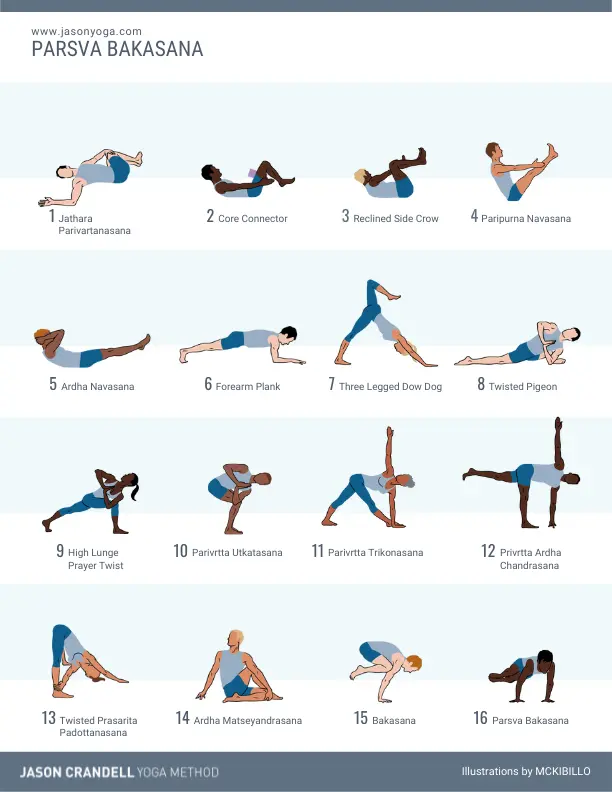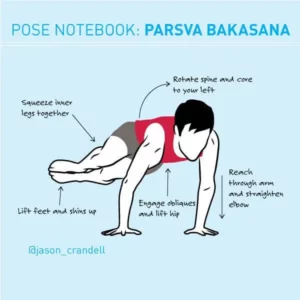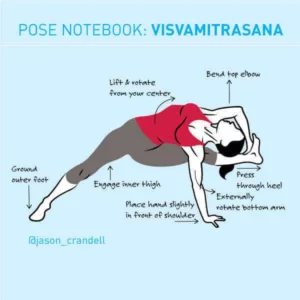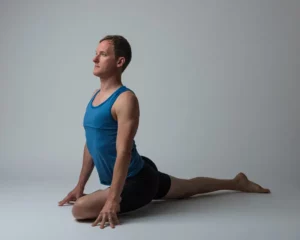I love creating sequences for Parsva Bakasana. I always have. Since the posture contains so many components, there are countless ways I can take the class. I can focus on a sequence of upper body and core strengthening postures before tackling Parsva Bakasana. Or, I teach a practice full of deep, detoxifying twists before guiding my students into this peak pose. Other times, like in the sequence below, I’ll create a more balanced approach where each of the posture’s components is equally prepared.
Sequencing for Parsva Bakasana is also deeply satisfying because a sound, logical progression can help students break through and do the posture for the first time. Confusion is one of the biggest hurdles to doing this pose well—-or, at all. Often times students are physically capable to do the pose but struggle because they don’t know the building blocks. A good sequence demystifies the actions and helps you feel your way into the pose.
Since Parsva Bakasana is the foundation for more advanced arm balances such as Dwi Pada Koundinyasana and Eka Pada Koundinyasana I, it’s a nice posture to emphasize in mixed level classes because you can encourage the more seasoned students to work on these variations.
Here are a couple of thoughts about the practice before you begin:
Sequence Focus: Parsva Bakasana requires core strength, upper body strength, hip flexibility, and spinal flexibility. The practice begins with core strengthening postures, then transitions into a progression of twisting standing postures. The standing postures I chose will help open your hips and prepare your spinal muscles for the twisting component of Parsva Bakasana. Finally, the posture hits its’ peak with Bakasana and Parsva Bakasana. If Bakasana is a challenging pose for you, please check out my Bakasana sequence. Take your time, be patient, and enjoy yourself—-even if you struggle a little.
Before You Begin: For a longer, more intense practice, you can begin with Sun Salutations. Feel free to include as many lunge salutations, Surya Namaksar A, and Surya Namaskar B as you’d like. Otherwise, you can dive into the practice below.
After You Finish: This sequence is predominantly twists. Twists prepare the body for forward bends and backbends, so, really, you can go either way after you’ve concluded Parsva Bakasana. If you want to do forward bends, Baddha Konasana (Bound Angle Pose), Upavistha Konasana (Wide Angle Pose), and Paschimottanasana (Seated Forward Bend) are a good bet. If you want to do backbends, I recommend a Low Lunge to open the front of your thigh before transitioning into a few rounds of Setu Bandha (Bridge Pose) and Urdvha Dhanurasana (Upward Bow Pose).
You could take a few minutes in seated meditation before calling it a day and resting in Savasana.
{illustrations by MCKIBILLO}
Want more sequences by Jason?
Sign up to join our newsletter and we’ll send you our e-book:
30 Essential Home Practice Sequences.



